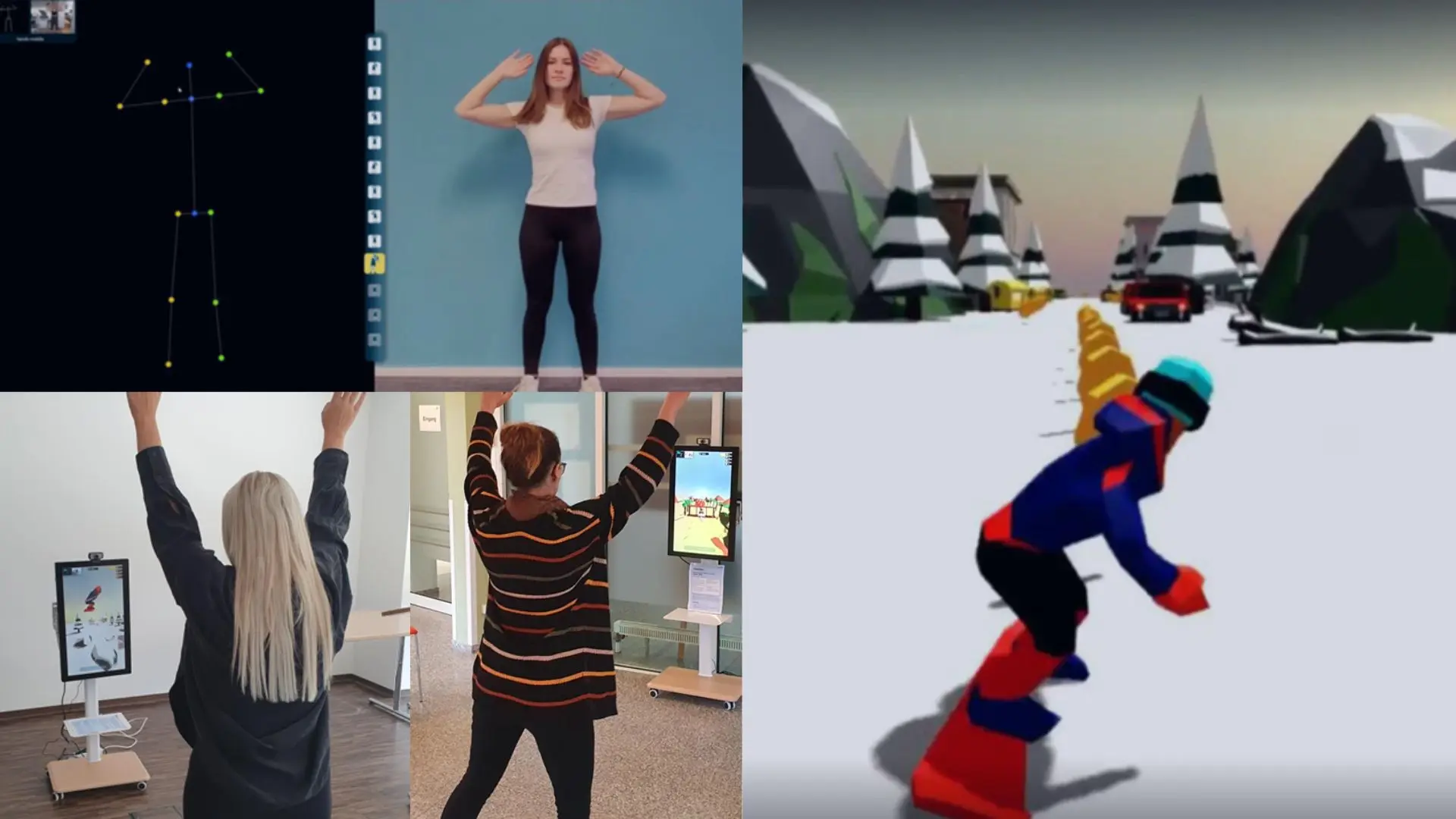
Exergames
Ergogames in nursing professions
In recent years, we have already successfully completed several exciting projects with our Ergogames. Some of these were funded by health insurance companies, while others were carried out independently by our dedicated employees as part of master's theses. The focus was always on researching the effectiveness of our Ergogames in different target groups. We were able to gain particularly interesting insights in the groups of carers and students. These results offer valuable approaches that we can use to further develop our Ergogames and use them in an even more targeted way in the future. In this article we would like to share our exciting results from our project for nurses.
Study and intervention design:
The study was conducted as a multicenter pre-post design. Nurses were recruited for an 8-week intervention period. The intervention included prevention-oriented exergames that were specifically tailored to the needs of nurses. The respective games combined movement and knowledge to promote the back health of the users. It was based on an exercise science concept that was geared towards the individual fitness of the users and implemented various training principles.
The exergame comprised three levels, each with two speeds and an “endless roller” system. In the game, users had to ride through different landscapes, overcome obstacles and collect coins to gain game advantages. Integrated exercise sequences were used to train muscle groups relevant to back health such as the neck, shoulder, back and abdominal muscles as well as the pelvic floor. An instruction area and a separate area for educational content provided additional knowledge on health promotion and the correct way to deal with workloads.
At the beginning of the study, the participants completed a pre-questionnaire, which collected information on various health parameters and experiences with exergames and OHM measures. At the end of the 8-week intervention period, participants completed an after questionnaire to measure changes in the same parameters. The before and after questionnaires were both quantitative (e.g. using Likert scales) and qualitative. The Wilcoxon sign test was used for the statistical evaluation of the pre-post data, supplemented by calculations of correlations in order to analyze relationships between different variables.
Sample description:
A total of 99 nursing staff took part in the study. 86 nurses completed the before questionnaire, including 70 women and 16 men. The age distribution of the pre-questionnaire respondents was as follows: 34 participants were between 18-30 years old, 22 between 51-60 years old, 14 between 31-40 years old, 12 between 41-50 years old and 4 were older than 60 years old.
A total of 48 nursing staff took part in the follow-up survey. Of these 48 participants, 30 completed both the before and after questionnaires.
Results:
Overall, the project has made it clear that back pain and stress are widespread challenges in the nursing profession. At the same time, many nursing staff have little experience with occupational health management (OHM) measures or exergames. Nevertheless, the offer met with great interest and was rated positively overall. The intuitive controls and largely smooth technology contributed to acceptance.
Around half of the participants reported subjective improvements, such as increased strength, increased mobility or reduced pain. Other health parameters showed positive but not statistically significant trends. Longer and more systematic use is required for sustainable effects.
The gaming experience was perceived as pleasant, challenging and effective. The majority of participants showed great interest in a wider selection of games and the possibility of using the exergame at home. Customization options to suit individual fitness levels, experience and needs would further increase the appeal.
However, the integration of the measure into everyday working life was made more difficult by a lack of time and staff shortages. Although the support of management was perceived as positive in some cases, exercise breaks are not always feasible.
Conclusion:
Based on the results and feedback so far, we conclude that the exergame offering should be expanded and adapted in several areas to further increase its impact and acceptance. We are therefore planning to develop additional virtual worlds, game modes and characters to make the gaming experience more varied and appealing. From the results, we were also able to conclude that there is interest in exergames at home - which we have already implemented with our new City Hopper prevention course.
We are also aiming to adapt the exergame more closely to the individual needs of users. To this end, we will develop settings that take into account different fitness levels, playing and exercise experiences and health requirements.
Integration into everyday working life is another key point. The management level should be specifically involved in order to actively promote exercise breaks and systematically support the use of exergames. In addition, flexible time slots should be created to make it easier for nursing staff to take advantage of the measure in quieter moments.
Outlook:
With these adjustments, we want to make the offer more flexible, more attractive and easier to integrate into everyday life in the future in order to increase acceptance and achieve long-term health benefits. New projects that also involve senior citizens in care facilities, among others, have already been launched.
